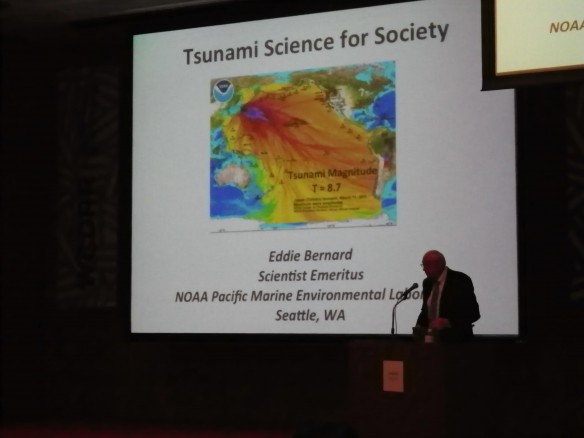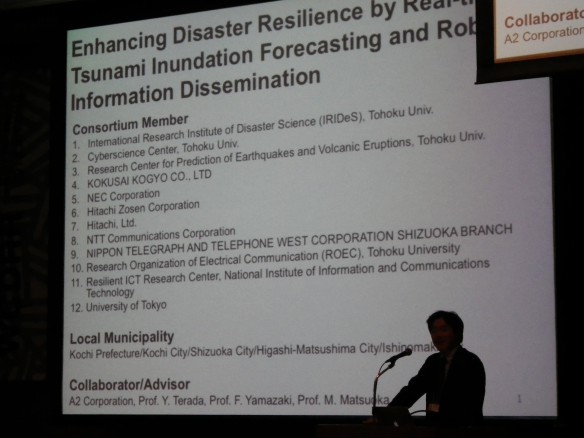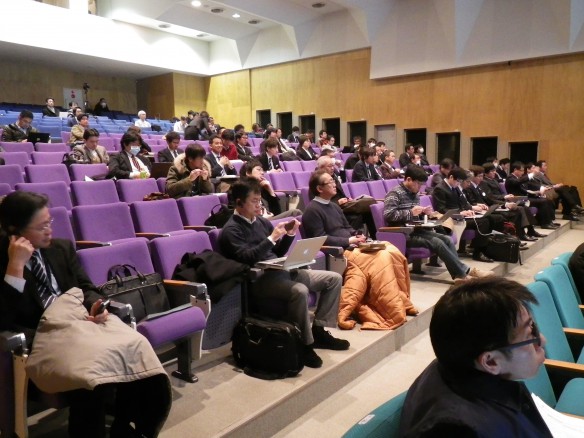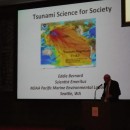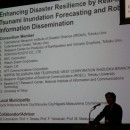ID:168 Enhancing Disaster Resilience by Fusion of Simulation, Sensing and Geospatial Information
- Date
- 2015-03-15(Sun)
- Time
- 9:30-16:45(Door Open 9:00)
- Venue
- Tohoku University Mutimedia Hall
Report has released
- Translation
- Simultaneous interpretation
Contact/Entry
E-mail:koshimura*irides.tohoku.ac.jp (Please replace * to @)
International Research Institute of Disaster Science, Tohoku University
http://www.regid.irides.tohoku.ac.jp
Organization
Tohoku University International Research Institute of Disaster Science (IRIDeS)
Co-organization
Ministry of Internal Affairs and Communications
Japan Aerospace and Exploration Agency(JAXA)
German Aerospace Center
UN-SPIDER (United Nations Platform for Space-based information for Disaster Management and Emergency Response)
Tags
Report
| Number of participants | 150 |
|---|
Focusing on enhancing society’s resilience towards future catastrophic disaster by providing the possible and severe disaster scenarios and leading actions of citizens this public forum aimed to provide an opportunity to share the advances of disaster management system by fusion of simulation, sensing and geo-informatics, and to discuss its utilization and future perspectives. The form consists of some thematic sessions with a keynote lecture, presentations from Japan government, academia, and industries. The agenda was as follows;
1st Session
Enhancing Disaster Resilience by Real-time Tsunami Inundation Forecasting and Robust Information Dissemination
9:30-9:35 Opening Remarks
Prof. S. Koshimura (Tohoku Univ.)
9:35-9:55 Keynote Speech
Dr. Takuo Imagawa (MIC, Japan)
9:55-10:25 Keynote Speech
Prof. Ryosuke Shibasaki (Univ. of Tokyo)
10:25-10:55 Special Presentation
Dr. Eddie Bernard (Former Director, NOAA/PMEL)
11:00-11:30 Project Report
Prof. Shunichi Koshimura (Tohoku Univ.)
11:30-11:50 Project Report
Prof. Hiromichi Fukui (Chubu Univ.)
———————
2nd Session
Establishing the Most Advanced Disaster Reduction Management System by Fusion of Real-time Disaster Simulation and Big Data Assimilation
13:00-13:15 Opening Remarks & Introduction
Prof. S. Koshimura (Tohoku Univ.)
13:15-13:30 Project Report
Dr. Takane Hori (JAMSTEC)
13:30-13:45 Project Report
Prof. Yoshihide Sekimoto (Univ. of Tokyo)
13:45-14:00 Project Report
Prof. Fumio Yamazaki (Chiba Univ.)
14:00-14:15 Project Report
Prof. Kaoru Sezaki (Univ. of Tokyo)
14:15-14:30 Discussion
———————
3rd Session
Satellite Earth Observations to Support National and Local Disaster Risk Reduction
14:45-14:55 Shunichi Koshimura (Tohoku Univ.)
14:55-15:10 Simonetta Di Pippo (Director, UNOOSA)
15:10-15:25 Ivan Petiteville (Chair, Disaster Working Group, ESA/CEOS)
15:25-15:40 Chu Ishida (JAXA)
15:40-15:55 Günter Strunz (Head of Department, DLR)
15:55-16:10Joachim Post (Expert, UN-SPIDER)
16:10-16:25 Makoto Ikeda (ADRC)
16:25-16:45 Discussion and Conclusion
Outline
Focusing on enhancing society's resilience towards future catastrophic disaster by providing the possible and severe disaster scenarios and leading actions of citizens this public forum aims to provide an opportunity to share the advances of disaster management system by fusion of simulation, sensing and geo-informatics, and to discuss its utilization and future perspectives.Detail
9:30〜9:35
Opening Remarks
Shunichi Koshimura (Professor, International Research Institute of Disaster Science, Tohoku Univ.)
9:35〜12:00
Session 1 Enhancing Disaster Resilience by Fusion of Simulation, Sensing and Geo-informatics
Ministory of Internal Affairs and Communications, Univ. of Tokyo. NOAA, UNOOSA
12:00〜13:00
Lunch
13:00〜14:30
Session 2
Big data analysis and innovation in disaster management
Tohoku Univ., Univ. of Tokyo, JAMSTEC, Nagoya Univ., NIED
14:30〜14:45
Break
14:45〜16:45
Session 3
Earth Observations Technology towards Enhancing Disaster Resiliency
Tohoku Univ., JAXA, German Aerospace Center, UN-SPIDER


